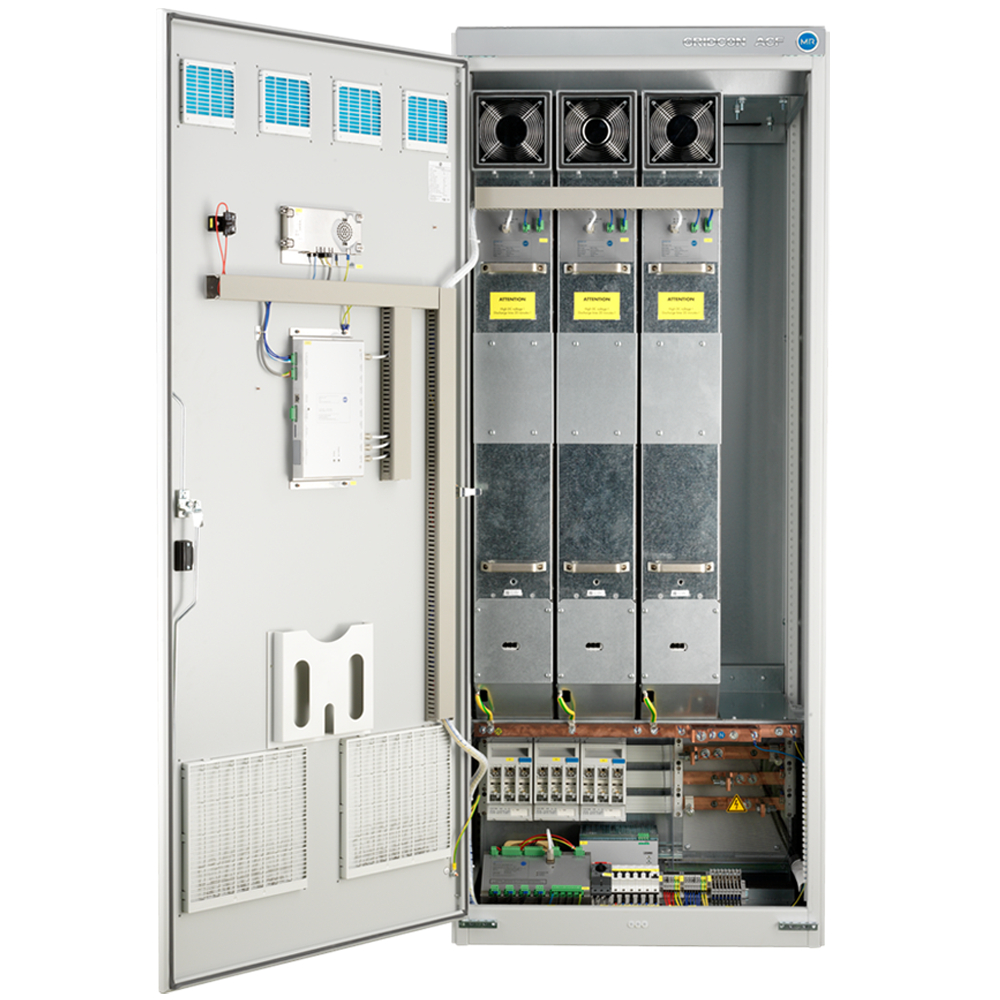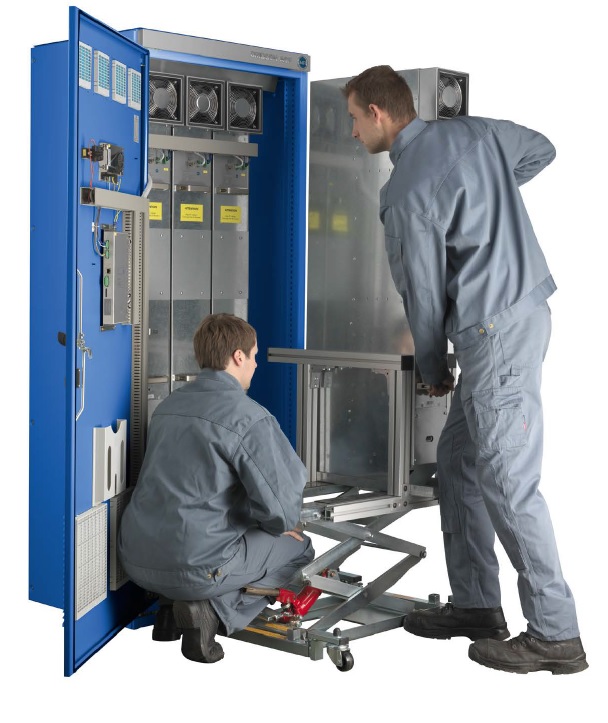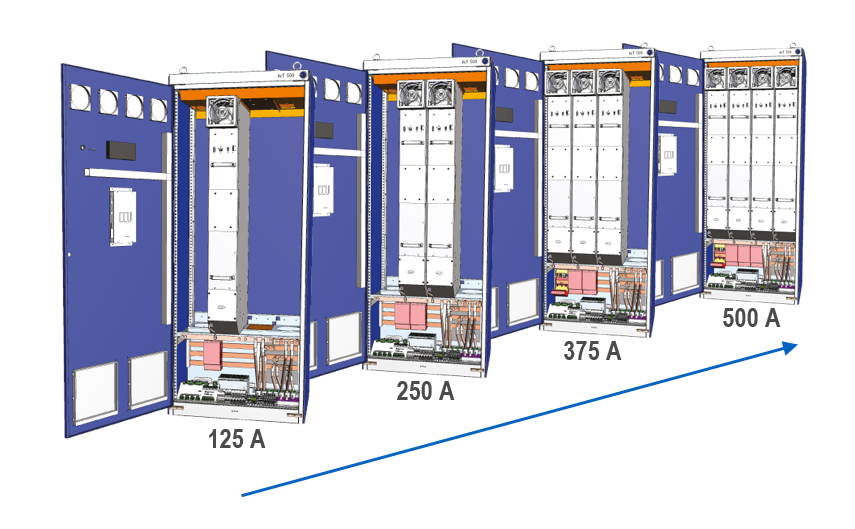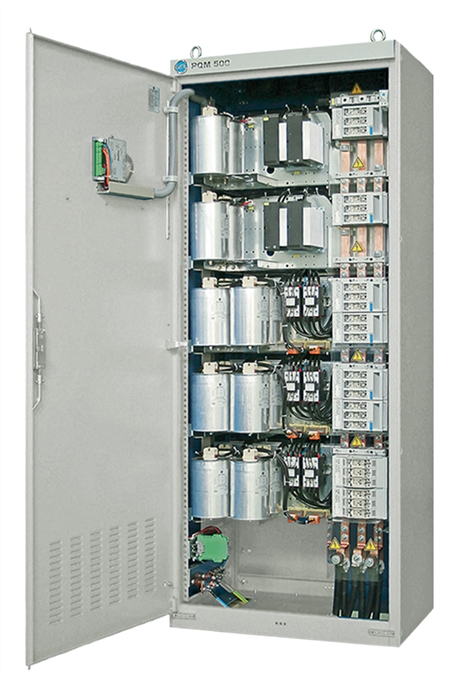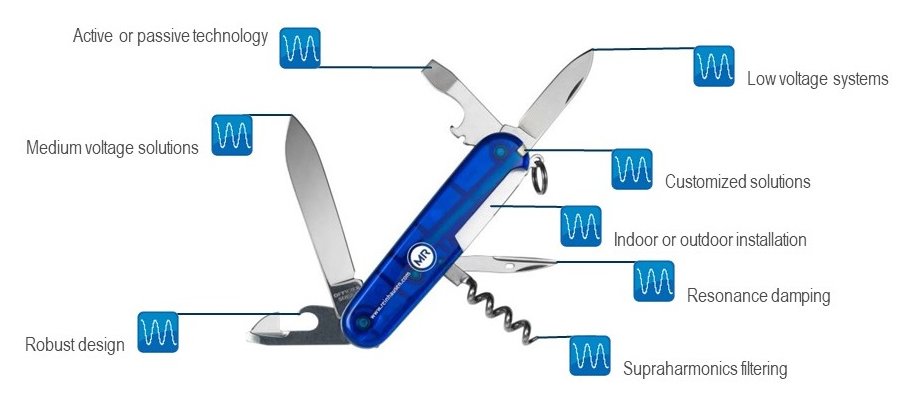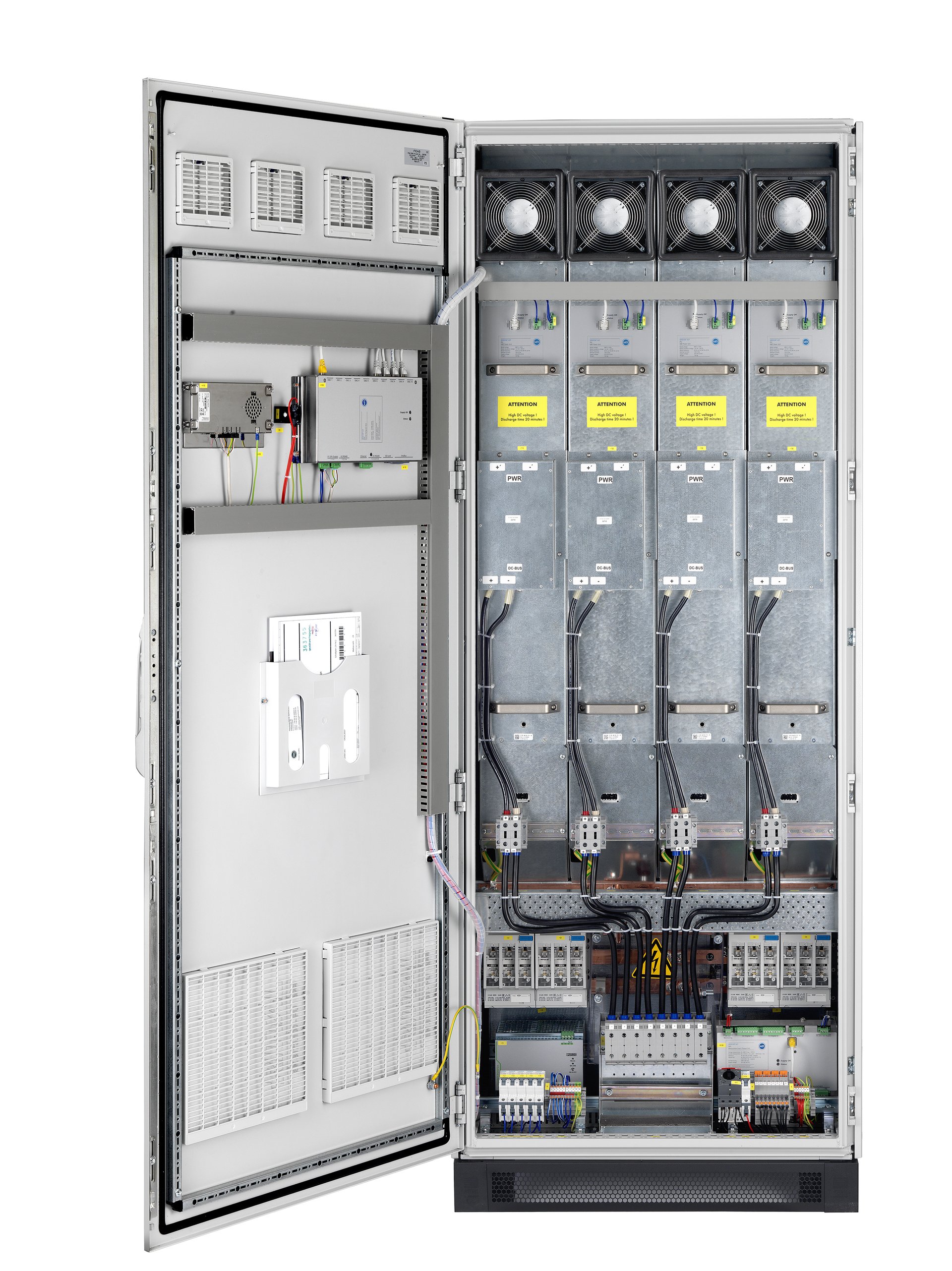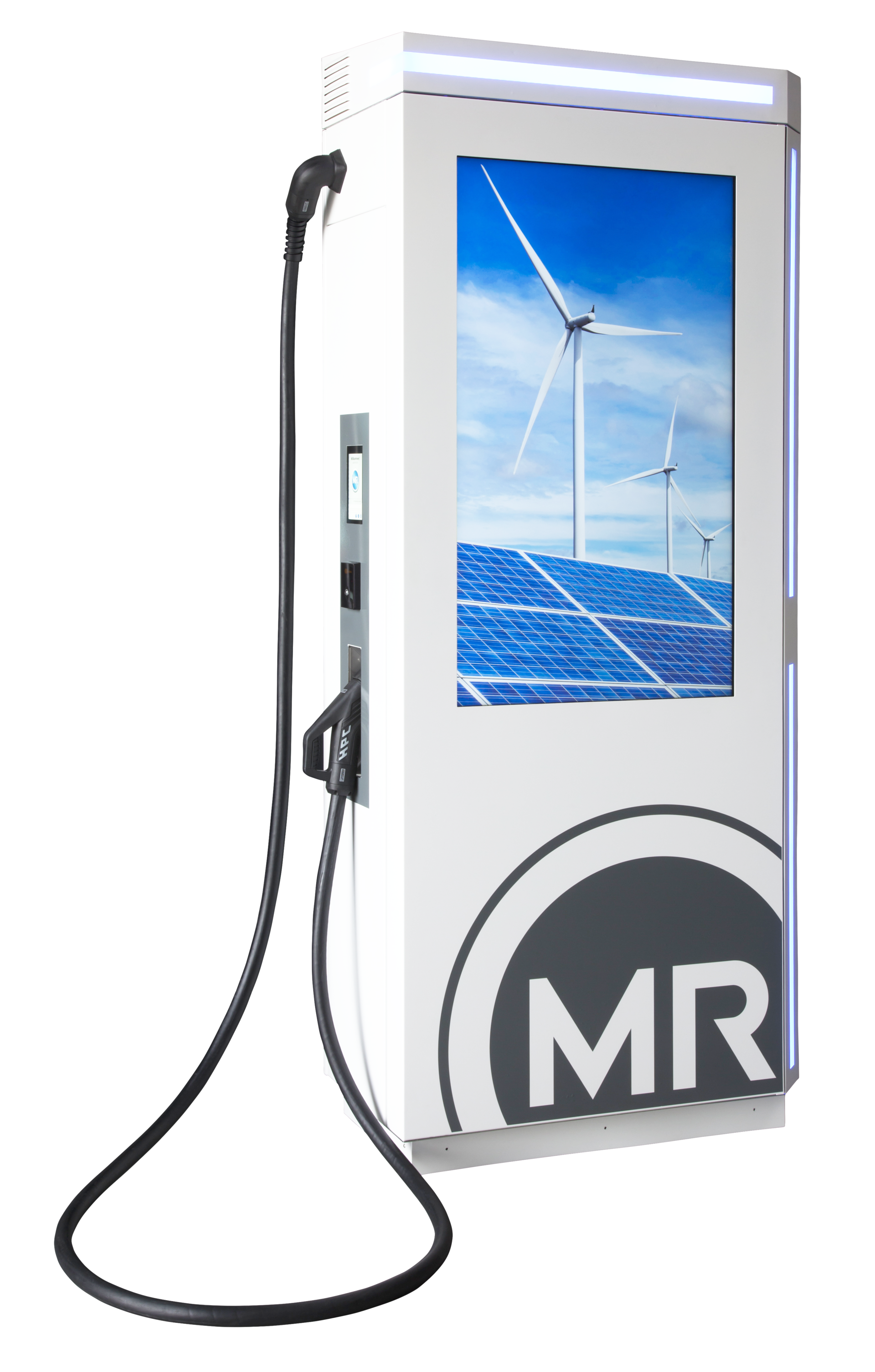GRIDCON® Active Filter
Active harmonic filters for broad band harmonics reduction
Modular active harmonic filters for any application: Our 4-wire active filter is optimized for filtering single-phase loads, and protects against neutral conductor overloads. Common applications are in 208 V and 400 V networks. The 3-wire variant is designed for industrial applications with symmetrical loads and is available with up to 500 A per control cabinet. Its range of application goes beyond the voltage of 400 V: the filter also improves the voltage quality in networks with nominal voltages of 480 V, 600 or 690 V or reduces harmonics in medium voltage networks via a transformer.
Your Advantages at a Glance
-
Voltage control enables sensorless operation without current transformer, often with better results
-
Automatic compliance with permissible harmonic limits according to EN 50160 / IEC 61000 / IEEE 519 standard
-
Broadband filtering prevents additional heating of equipment by selectively reducing voltage distortion up to the 51st harmonic
-
Flexible - For all voltage levels up to 690V
-
High dynamic compensation of reactive power (capacitive and inductive) Harmonics and flicker
-
High power density in a small space: Up to 500 A possible in one cabinet and IP 54 protection class
-
Modularly expandable and flexibly adaptable to future consumer structures
-
Low-loss: Lower power costs through efficient design and 3-level technology
Product Information
Select language
Select language

